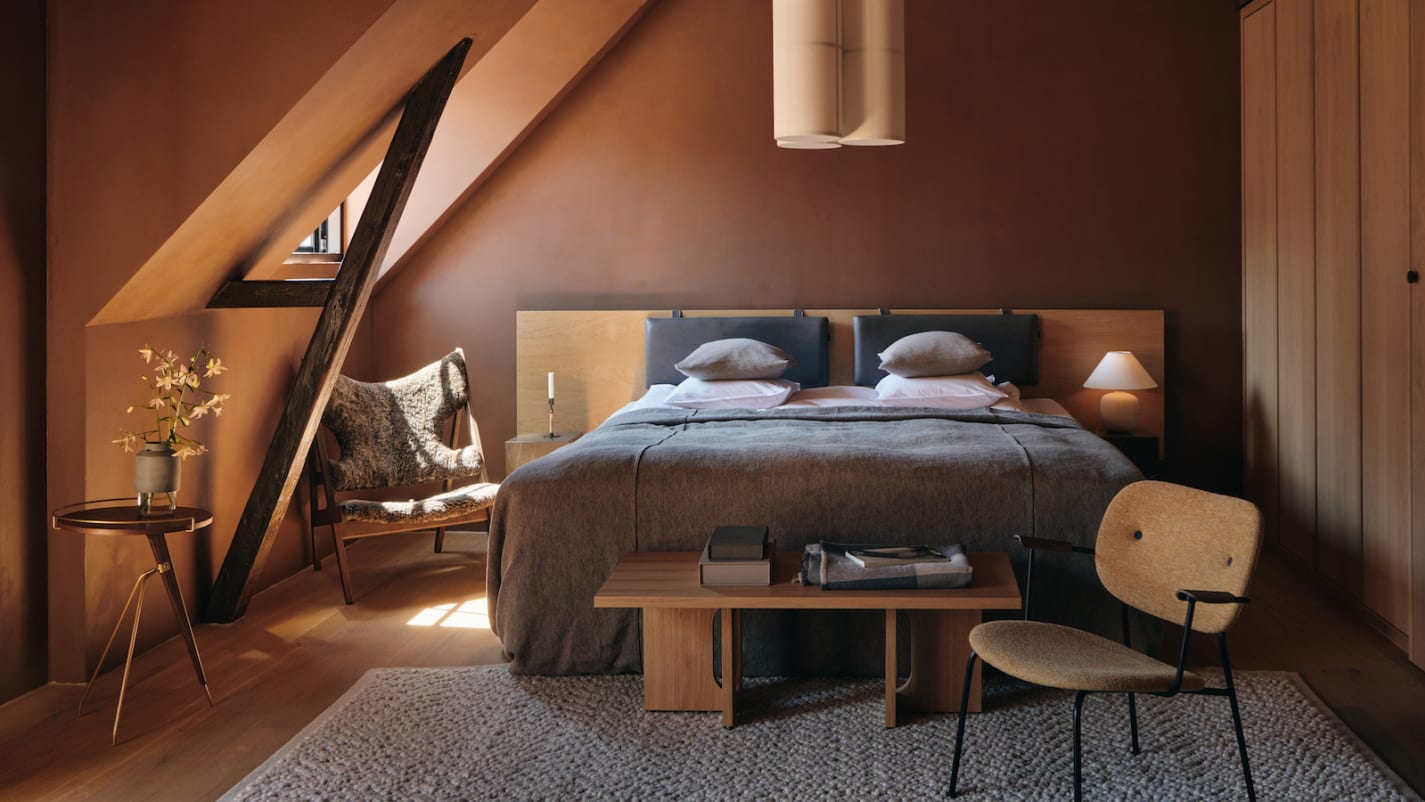
The cozy cleanliness of Scandinavian interiors and the minimalist beauty of traditional Japanese decor have made them both staples of modern home design. Now, there’s a growing trend combining the two: “Japandi.”
Google searches for the term jumped dramatically in the winter of 2020, as people around the world redesigned their homes amid Covid-19 lockdowns. Interest has risen steadily ever since, according to data from Google Trends.
“I think a lot of people were looking for a style that is relaxing,” said Laila Rietnergen, author of the new book “Japandi Living” in an email interview. “The serene and calming aesthetics of Japandi style and the craftsmanship items that are more durable fits perfectly within these needs.”
Zeitgeisty as it seems, this design fusion dates to the 1860s, said Rietnergen. She traces the aesthetic’s roots to Danish naval lieutenant William Carstensen, who visited Japan as the country opened up after two centuries of self-isolation. It was his book “Japan’s Capital and the Japanese” that first compelled Danish designers to travel to Japan, where they discovered that both cultures treasured simplicity and natural beauty, Rietnergen said.
Fast-forward to today, contemporary interior designers are rediscovering commonalities in the penchant for neutral tones, natural materials and minimalist decor.
As well as offering practical tips for readers, Rietnergen’s book presents dozens of photos of immaculate Japandi-style homes. As cozy as they are sleek, the living spaces are decorated with delicate paper lamps and inviting cream couches handcrafted by Scandinavian designers.
In one, a sleek kitchen peeks out to reveal clutter-free light brown cabinets that complement the dining room’s wheat and tawny tones. A plant adds a pop of green to the room. Rietnergen says both Scandinavian and Japanese design emphasize the importance of nature, not only through colors like light browns, tans and soft whites, but also by using materials like linen and wood to construct an atmosphere of tranquility.
Hygge and wabi-sabi
The key to Japandi design is creating something that is subtly decorated without feeling empty — somewhere that is elegant but where you can “feel at home and relaxed,” said Rietnergen, whose Instagram page Japandi design boasts nearly 450,000 followers.
Doing so revolves around two design principles: “hygge,” a Danish and Norwegian term that relates to feeling of coziness and warmth, and “wabi-sabi,” the Japanese concept of accepting imperfections.
To achieve either, it is essential to declutter, said Rietnergen, citing Japanese tidying expert Marie Kondo whose home organization methods became a global phenomenon following the success of her Netflix show, “Tidying Up with Marie Kondo.” Rietnergen, like Kondo, recommends treating tidying less as a chore and more a celebration — and a chance to reflect on whether the items around you make you happy.
Japandi style also celebrates craftmanship, whether it’s Isamu Noguchi’s delicate light sculptures or furniture by Carl Hansen, whose wishbone chairs sell for thousands of dollars. But Rietnergen stresses that the aesthetic can also be achieved by those decorating on a budget. After all, she says, it is a philosophy guided by the belief that “less is more.”
Rather than purchasing cheap mass-produced furniture that won’t last, Rietnergen suggests buying second-hand while saving up for those few standout pieces you can cherish for years. And, in any case, the beauty of Japandi design is that there are no strict criteria to follow, the author added.
“Every home and Japandi style interpretation is different,” she said. “It is really important to dare to make your own choices. Your home isn’t a showroom and should not be a copy paste of something you have seen. An important part is to add personal elements and items.”
Detailed read at-https://edition.cnn.com/style/article/japandi-living-interior-design/index.html
